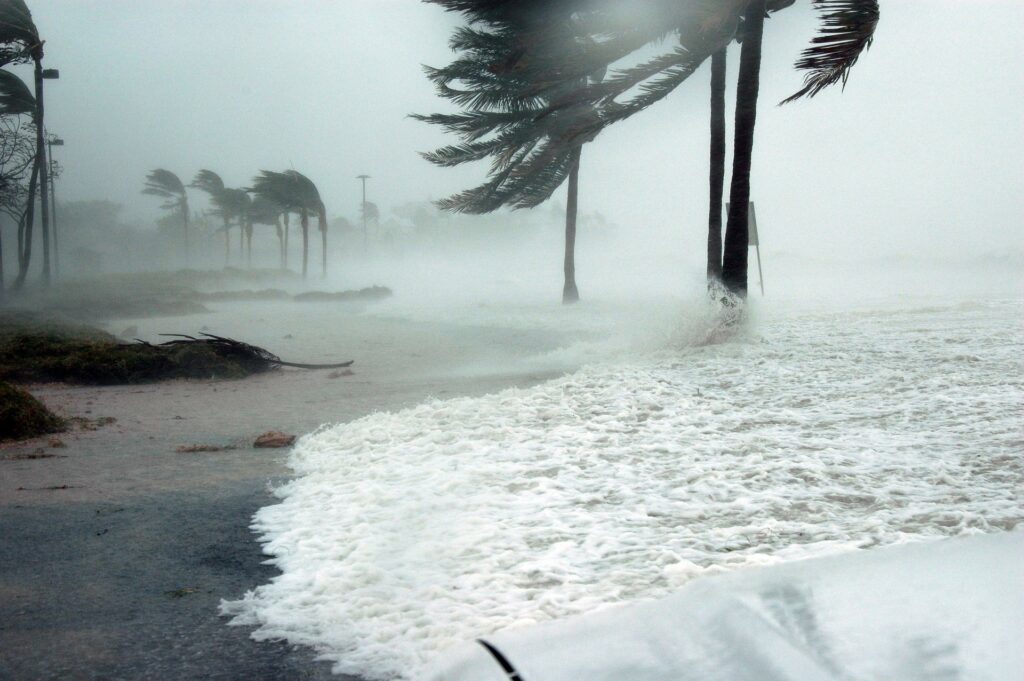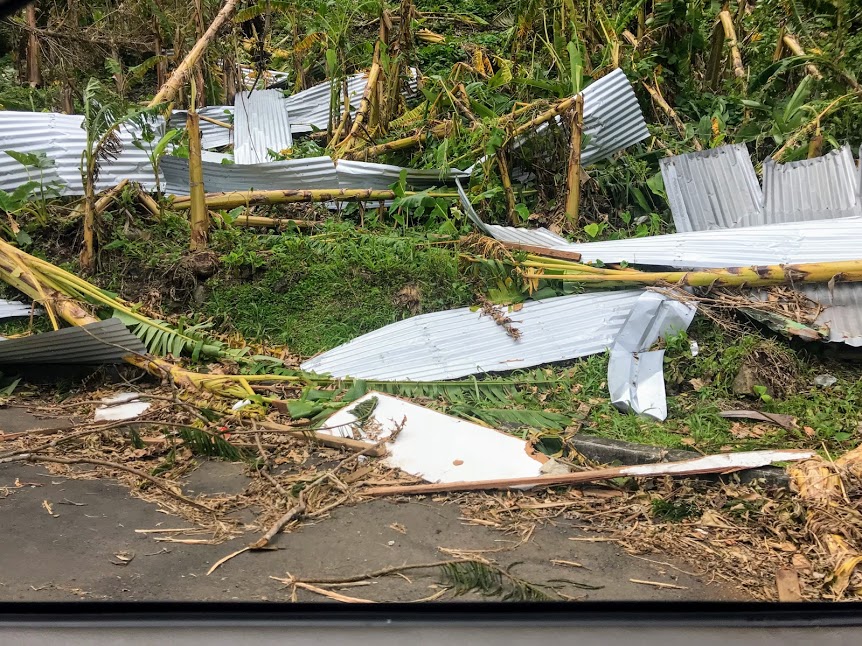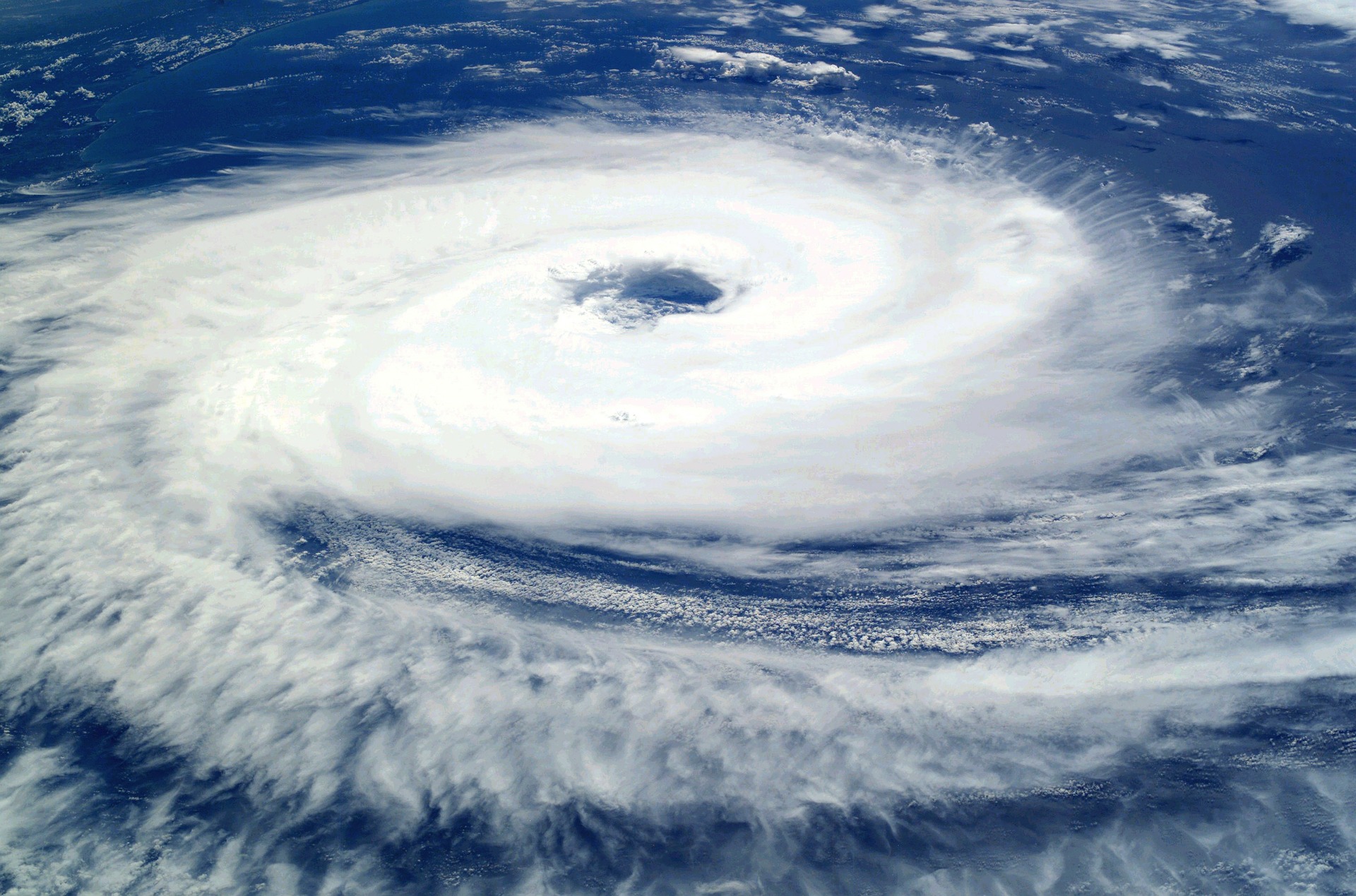Severe storms are one of the main threats during Cyclone Season in the tropical islands of American Samoa. Though they rarely hit our shores, it’s important to always be prepared. Just in case.

Cyclone Season in American Samoa
First off, cyclones, hurricanes, and typhoons are all the same thing. The different terms are used dependent upon where they occur. Cyclones occur in the South Pacific and Indian Oceans. Hurricanes occur in the Atlantic and Northeast Pacific Oceans. While, typhoons occur in the Northwest Pacific Ocean.
Basically, these storms form when the temperature of the ocean rises. As the water temperature increases, the evaporating water creates a vacuum affect (ie. Low pressure area), which pulls air from surrounding areas. The evaporated water forms heavy clouds and rain. The rain falls into this heated vacuum, causing more water to rise, creating more low pressure, and on and on. The air that fills the void, eventually begins to twist, forming the cyclone. In the Southern Hemisphere these winds turn in a clockwise direction, while they spin counterclockwise in the Northern Hemisphere. These cycles can continue until it hits land, which breaks the cycle, depriving it of the heat from the ocean surface.
Are you still with me? Don’t worry, I’m done with the technical stuff.
Cyclones have historically hit the shores of American Samoa only once every few years, with the last one wreaking havoc in February of 2017.
Although, cyclones are a threat, there are things you can do to prepare. After all, PREPARATION brings PEACE OF MIND.
Before a Cyclone Hits
In days gone by, cyclones would take people by surprise, leaving no time to prepare. Luckily, today we have satellites, buoys, and radars to track these violent storms. But even with the best tracking tools, there’s no way to control them. Mother Nature can be unpredictable, so it’s always best to be prepared during cyclone season. In American Samoa, that means from November-April.
Before a storm hits, these are some things you can do ahead of time to make sure you’re as ready as you can be:
Do These As Soon As Possible
– Have an Emergency Survival Kit packed and stored at home, ready for any emergency. It’s important to have a Go-Bag or 72-Hour Kit, as well, something that’s easy to grab and could last a few days, in case you need to evacuate in a hurry. For ideas on what to include in an Emergency Kit refer to websites like ready.gov or getthru.govt.nz.
You can also find Go-Bags or 72-Hour Kits on Amazon, all packed and ready to go.
– Going along with the Survival Kit, be aware that many crops and plantations may be damaged during a cyclone. It takes time for trees and plants to recover from such violence. Plan accordingly. Have a supply of non-perishable foods, so you’re not left hungry during the weeks to follow.
– Create an emergency plan with family or friends. Have an emergency meeting place, if you can’t get home or if you have to evacuate.
– Make sure your house and/or business is ready by checking the roofing is secure and windows are protected. While you may not want to spend 6 months with plywood over your windows, have enough supplies on hand to be able to fortify your windows if or when a cyclone watch is activated. If you don’t have either, you can make an “X” with tape across your windows, to at least minimize the chance of glass flying inward, should a window be broken during a storm.
– Trees and branches should be trimmed or removed, especially if they’re dead, as they can lead to downed power lines and potential flying hazards.
Before the Storm Hits
– Secure anything outside, either by tying it down or by bringing it inside. Even an empty bucket can become dangerous if it’s being hurled through the air by gale-force winds.
– Power and water services could be down for a while after a cyclone, so before a cyclone hits, make sure to fill any buckets or jugs with water and plug in electronics to top off the batteries. Power banks can be incredibly helpful in emergencies like a cyclone.
We’ve been using these Anker Power Banks for years, for daily use, while traveling, and as emergency preparedness.

During the Cyclone
When the winds start howling and the rain starts beating upon your roof, it’s too late to prepare. All you can do now is stay calm and stay safe. Ideally, you have a battery powered radio or device with which you can check updates on the status of the storm.
-Stay in the strongest part of your house, away from windows. Windowless rooms are usually the safest, due to the possibility of object flying outside and breaking the glass.
– Reassure children. Distract them with coloring books or toys. Let them know that they’re safe. Make sure you stay calm too. Children will follow your example.
– Never tie up animals, this could leave them trapped in a dangerous environment.
– If your house or building starts to break apart, hunker down under something sturdy- a solid table, desk, or bench, or under a mattress.
– If you’re away from home or need to evacuate during the storm, proceed with extreme caution to your agreed upon emergency meeting location. Don’t forget your Go-Bag.

After the Storm
Don’t mistake the calm of the eye of the storm for the storm being over and past. Wait until you get the all-clear from local authorities to leave your house. Even after the storm is past, there will still likely be hazards, use your common sense and proceed with caution.
Safety First
-The first thing you can do is check on your neighbors/family/friends. Once you’ve accessed the situation and deemed it safe, see how you can offer assistance to anyone who may need it.
– If your home was damaged and is no longer livable, contact your local authorities. They can advise you of available shelters (usually nearby churches). These offer a safe place to stay and supplies, until you can find more permanent accommodations. Again, stay calm and show gratitude, as these are generally offered voluntarily.
– Stay away from downed power lines. Contact ASPA (American Samoa Power Authority) to report these hazards, then allow them to do their part to restore the island.

– Be aware of blocked roadways. The powerful winds of a cyclone will most likely have uprooted trees and blown debris that settled on the road. You can form a clean-up crew with neighbors, to clear the debris. Just be watchful of downed power lines and other hazards. You can also report these blockages to ASPA.
– The storm may have left parts of the island without power and/or water. Report any power or water loss to ASPA, then wait patiently. This island may be small, but there are a lot of individual lines that will need repairing and getting upset or frustrated won’t help them get repaired any faster.
– Water cleanliness may have been compromised during the storm. Make sure to boil and/or purify tap water until there is an official statement of clean water.
– After big storms, there is often a lot of standing water, which makes the perfect breeding ground for mosquitoes. Empty any open containers and try to drain any other standing water. Use extra mosquito protection to avoid an outbreak of mosquito diseases.

Peace of Mind During Cyclone Season in American Samoa
Being prepared for cyclone season can seem daunting, but you’ll be grateful and feel more ease when or if a cyclone hits. Keep in mind, most of the preparations can be used from year to year, making the first year the hardest, but subsequent years much easier. Just keep an eye on expiration dates of food, water, batteries, and such.
With these preparations and considerations you can rest at ease going through cyclone season in American Samoa (or anywhere). Having a plan and knowing the plan can give you peace of mind and confidence that you’ll be alright.
For a look at our experience during and after the last cyclone, check out Cyclone Gita- At the Mercy of Mother Nature.
You can also watch Rain, Rain Go Away on YouTube, as we share some thoughts on the Rainy Season here, in American Samoa.


I live in a hurricane prone area, so I hear ya on being prepared and staying calm! Thats the most important thing. Heed the warnings!
I was struck at the similarities between preparing for a cyclone and bushfires here in Australia!
That is interesting. I guess disaster preparations are pretty similar, regardless of the disaster. Thanks for reading!
This is great information. Hurricanes are so scary and any information that can help prepare you is vital. Thanks for sharing.
We just went through over a week of being on cyclone watch and yes, it can be so scary. But being prepared helps provide peace of mind.
Awesome advice on how to handle the seasons and make the most of your time. Super helpful.
Thanks! Like I said, American Samoa is beautiful, no matter what time of year, but visitors may have an easier time getting out and enjoying the islands if they’re not stuck in the middle of a cyclone. haha
Comments are closed.